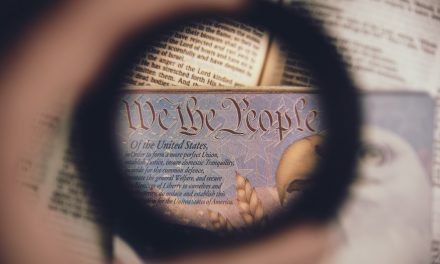When I was in graduate school, I made the off hand comment to my roommate about how McDonald’s runs Filet-o-Fish specials every year during Lent. My roommate, a life long Methodist, was totally surprised by this revelation. He had never noticed it. (He recently used this tidbit to amaze his high school students by predicting an upcoming Filet-O-Fish special.)
This year I have noticed that even more places have taken to fish during Lent. My grocery store was the first place I noticed this phenomenon.
This sign struck me not only because it was so explicitly Lenten but also because it was using Lent to encourage people to buy things.
In the parking lot at the grocery story is a fast food restaurant specializing in chicken sandwiches. It had the following sign.
A chicken place doing fish? I turned left out of the parking lot to head home and drove past a pancake restaurant. It had this sign out front.
Alright, it does not say “Lent”, but fish on Wednesdays and Fridays? Definitely a Lenten crowd. But really? A pancakes place? As the ESPN segment goes, “C’Mon, Man!”
Up the road on my way home, I knew I would run by the McDonald’s running its Two Filet-O-Fish combo meal special, because just one sandwich is not enough during Lent. Before I got there however, I hit one of McDonald’s competitors with this sign.
They were not just running a fish special but emphasizing that we should only settle for “premium” fish, not run of the mill fish during this time of prayer and fasting.
On this two mile drive home from the grocery story, I ran into five different fish specials. Maybe it is just me or maybe it is just this part of the country, but something seems fishy about fish on Friday. It strikes me as a perfect example of Vincent Miller’s characterization of the affects of consumer culture in his Consuming Religion. He argues that our culture teaches people to approach things, people, religious beliefs, whatever, as commodities, stripping them of their communal location and turning them into items of individual expression. Crosses become jewelry. Army jackets become fashion statements. Even critics of this process of commodification get turned into objects of consumption. Miller notes that while John Paul II issued warnings about the dangers of a free market economy, surrounding his visits to the U. S. were Popeners, Pope on a rope, Styrofoam pope hats, and John Paul II t-shirts. Based on Miller’s perspective, these examples demonstrate that the market economy co-opts everything in culture—even its supposed enemies—strips it of its communal, historical, and cultural roots and repackages it as a commodity that can be bought and sold and, through the purchasing, provide people with a way of making themselves distinct, standing out from others.
The Catholic Lenten practice of abstaining from meat on Friday becomes an occasion to buy fish, go out and eat, eat a lot, and eat only “premium” food. Moreover, the subtlety of the situation is the assumption that because one is buying fish and fish sandwiches one is practicing their Catholic faith.
I think we should reflect on whether buying a fish sandwich at a restaurant on Fridays captures what this discipline is about. I have two examples that I think better grasp the purpose of this Lenten practice.
I ran into one of my former majors, Kevin, who now works as a youth minister. He had just come from a Fish Fry at his parish. I asked him if he was responsible for the frying. Basically, he said, “No, my job was to talk with people. My youth group was in charge of selling drinks, but I was supposed to chat with everyone.” Succinctly, he seemed to capture an aspect of the discipline: building community. Communal sacrifices or enterprises bring people together, and together they talk and are reminded of their obligations to help one another.
The second example is happening on my campus. This year, during Lent, the cafeteria is not serving meat. The policy change came from the office of Mission. (However, it was not imposed from “above” but rather resulted from a number of conversations the head of the office had with groups on campus, mainly student groups.) The result is a communal recognition of this time, one that most agreed to even if they were not Catholic.
For both of these examples, the result of the abstinence is not a piety that focuses on what ‘I’ am doing, like eating fish sandwiches on Fridays, but rather how these sacrifices, even small ones like the abstaining from meat for one day a week, are meant to connect each of us to each other. I think they should in someway reflect Christ’s sacrifice that reconciled us to God and one another.








When I was in grade school, I always looked forward to Lent, because the candy bars in the school vending machines were replaced with other snack items, and I liked the little packs of potato sticks better than any candy.
One Lent my older sister had given up watching television for Lent. This was during the early days of rock and roll, and to her chagrin, one of the current heartthrobs was making a television appearance. The solution? She came into the tv room, kept her back turned, and watched the reflection of the television in a mirror.
Thanks for pointing out how Lent can be co-opted. The link to Vince Miller’s work is exactly right. Eating fish just isn’t a great sacrifice for many of us, since it’s often either an expensive or an environmentally poor choice. St. Vincent’s seems to be heading in the right direction. My husband’s church in LA used to have soup and salad (made by parishioners) on Fridays during Lent. I wish we had something like that in St. Louis, but the churches seem to be all about the fish.
Dare I add another example, from a beer I picked up for my husband?
“JosephsBrau Brewing Company’s Winterfest is a rich, dark bock, inspired by the beers Bavarian monks brewed to lift their spirits during the long fasts of Lent. Dark roasted Munich and caramel malts worked wonders for hungry monks. Our Winterfest is sure to do the same for you.”
I laughed when he read this off the label at the dinner table tonight because I had completely unintentionally purchased a Lenten beer. But there you have it: if you’re fasting, better have some good beer. Thanks, Winterfest, for helping us live Lent well.
On a more serious note, I do think the communal aspect is one of the most important aspects of Lenten penance. Before the bishops changed the Lenten fasting rule (in the 1966 “Pastoral Statement On Penance and Abstinence,” which was an implementation of Paul VI’s Paenitemini) there was one common penance-daily fasting-that everyone struggled with together and in which the community could support each other. Individually-chosen Lenten penances may be more personal and meaningful in some sense, but they seem to tend toward exercises in individual will-power. And then there’s always the “Do I tell others what I’m doing?” debate; so often we think that humility means we should keep our sacrifices hidden, but this also can deprive us of the community support that makes really good penance possible.